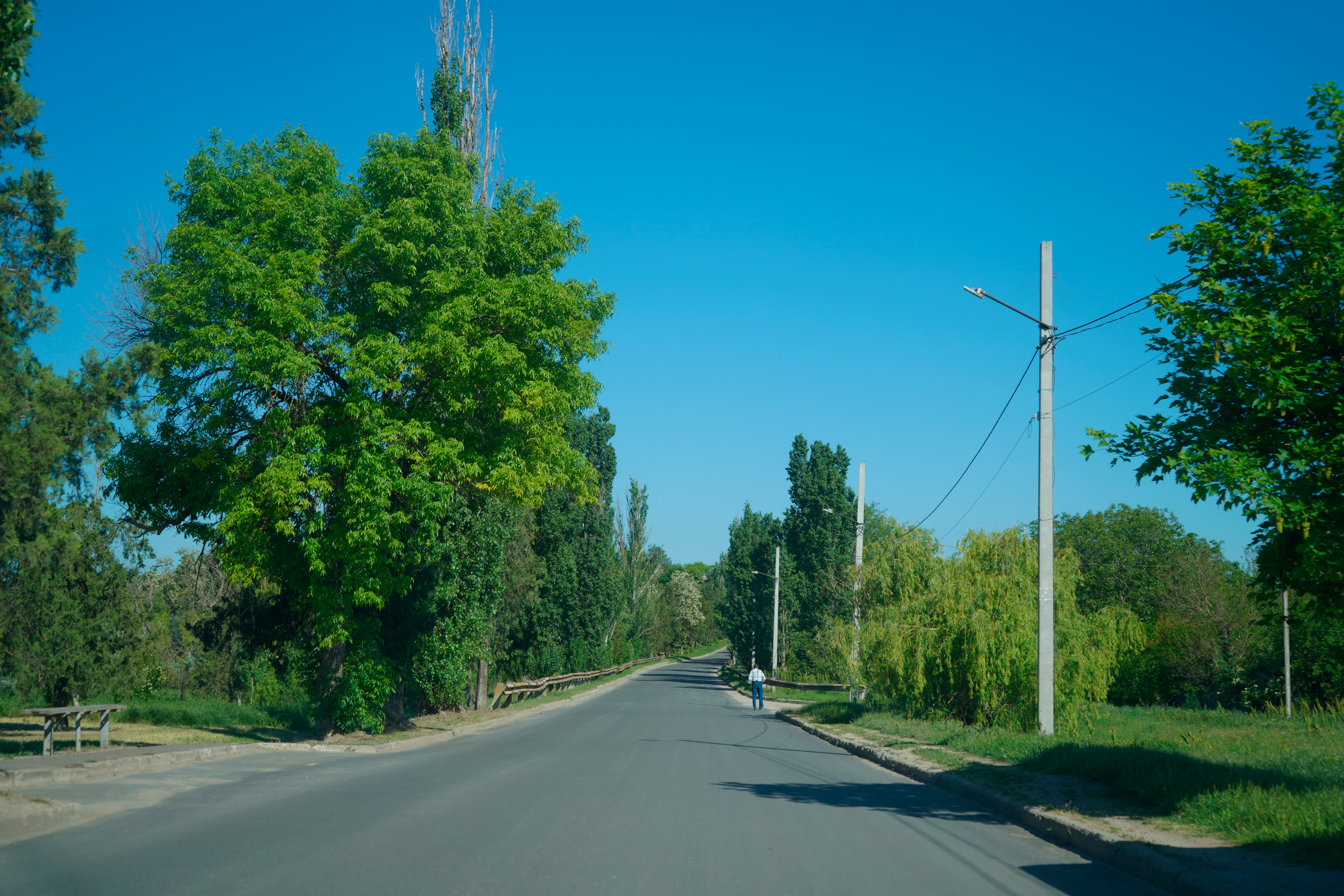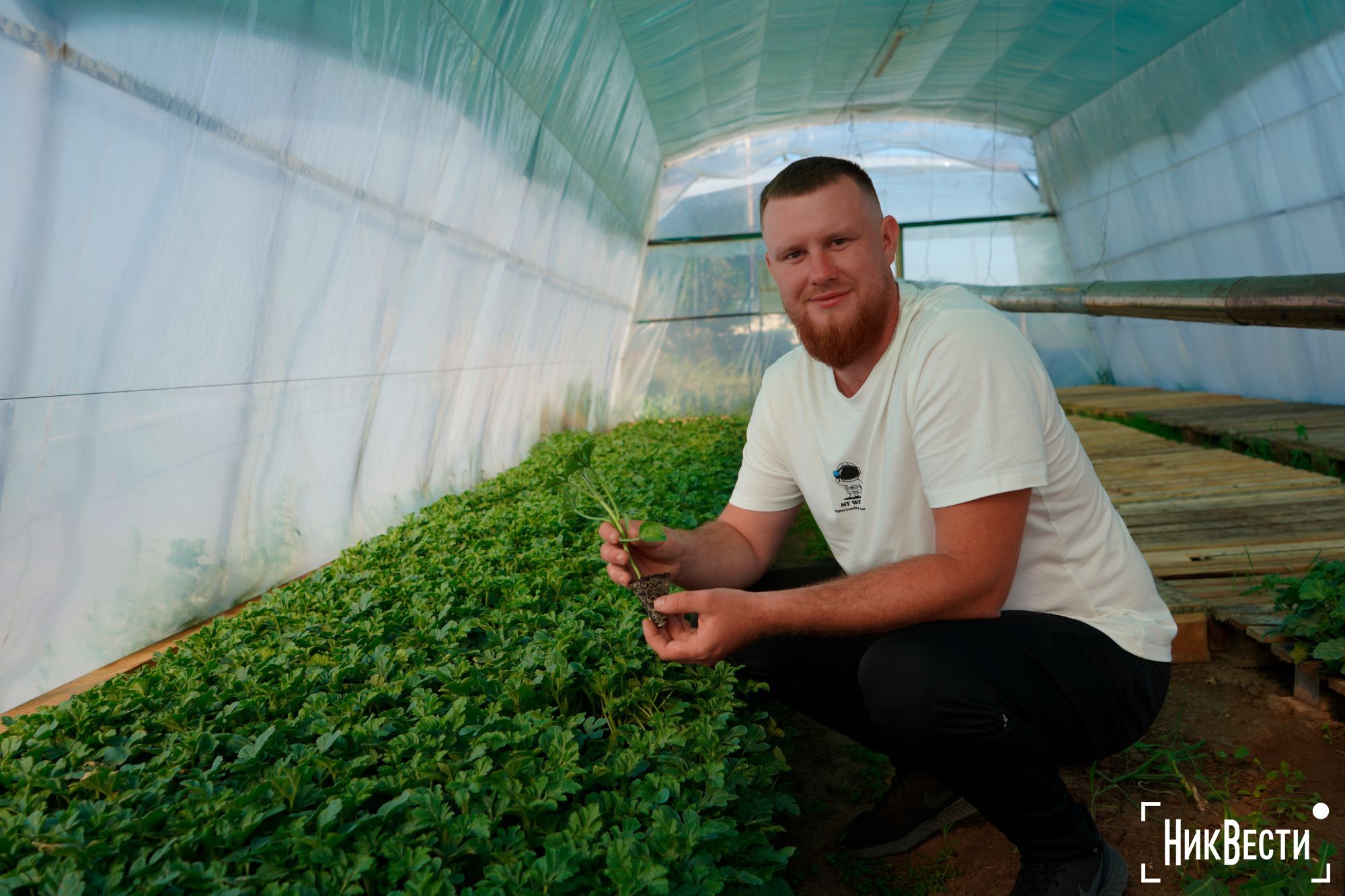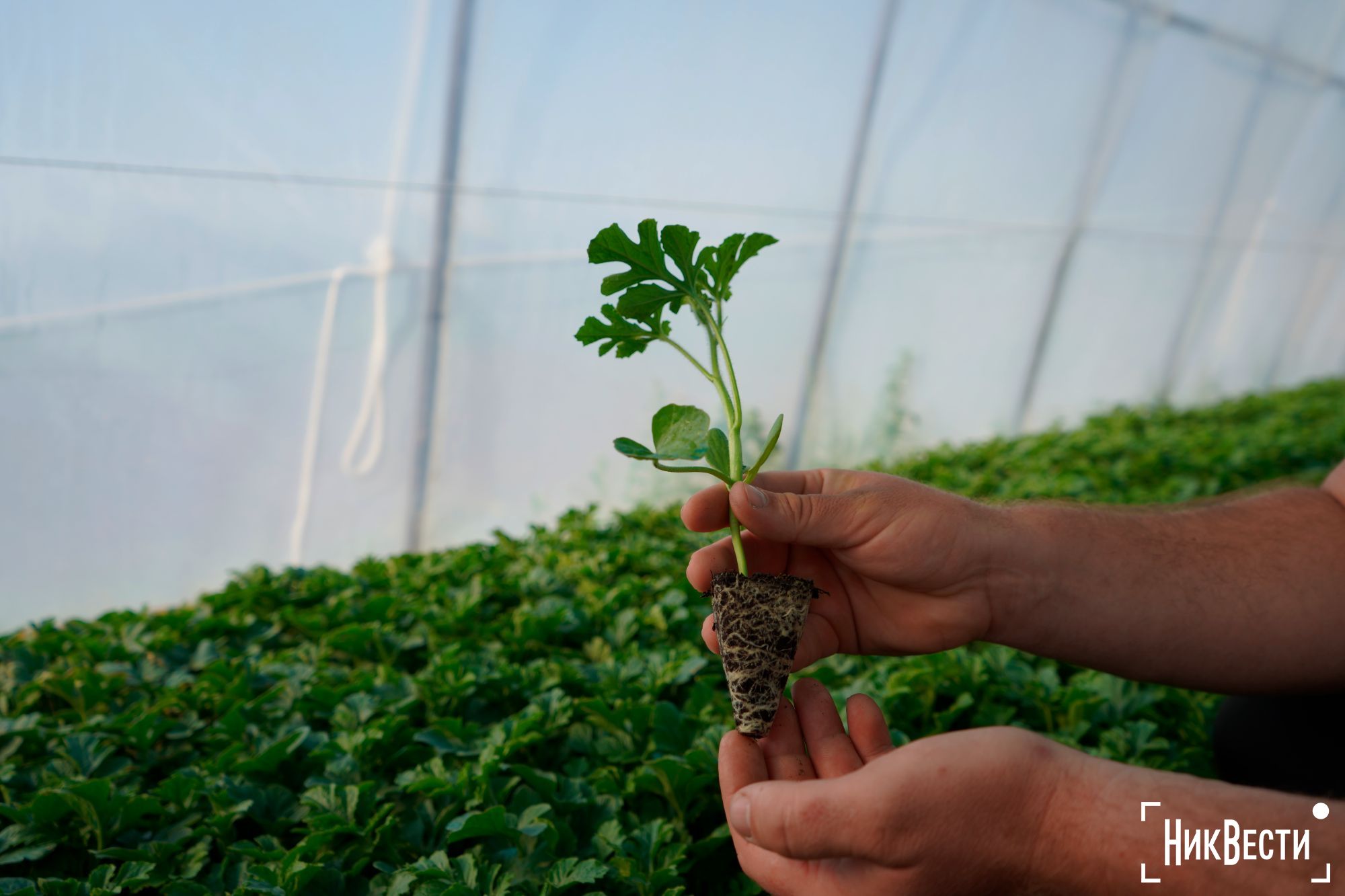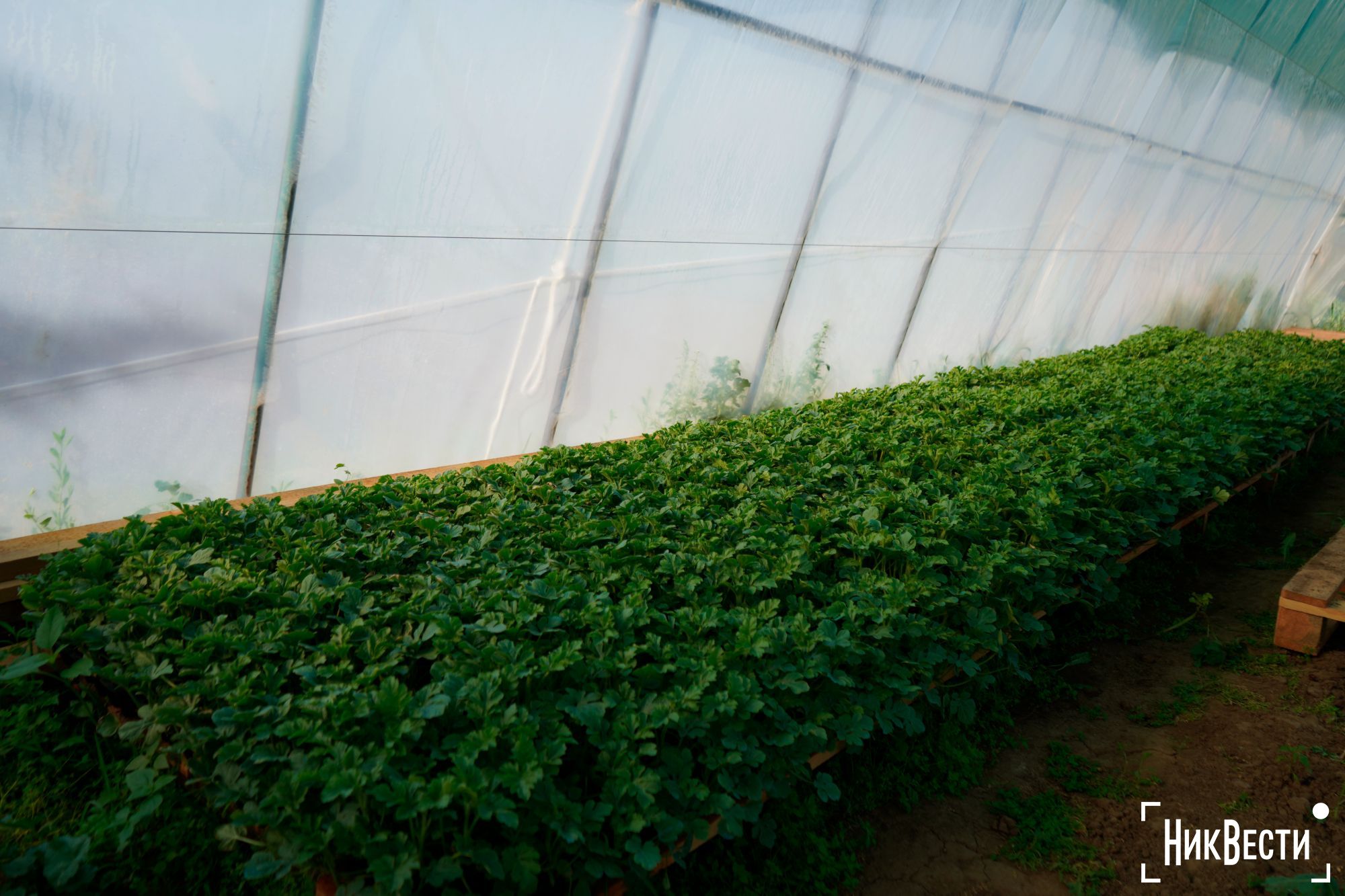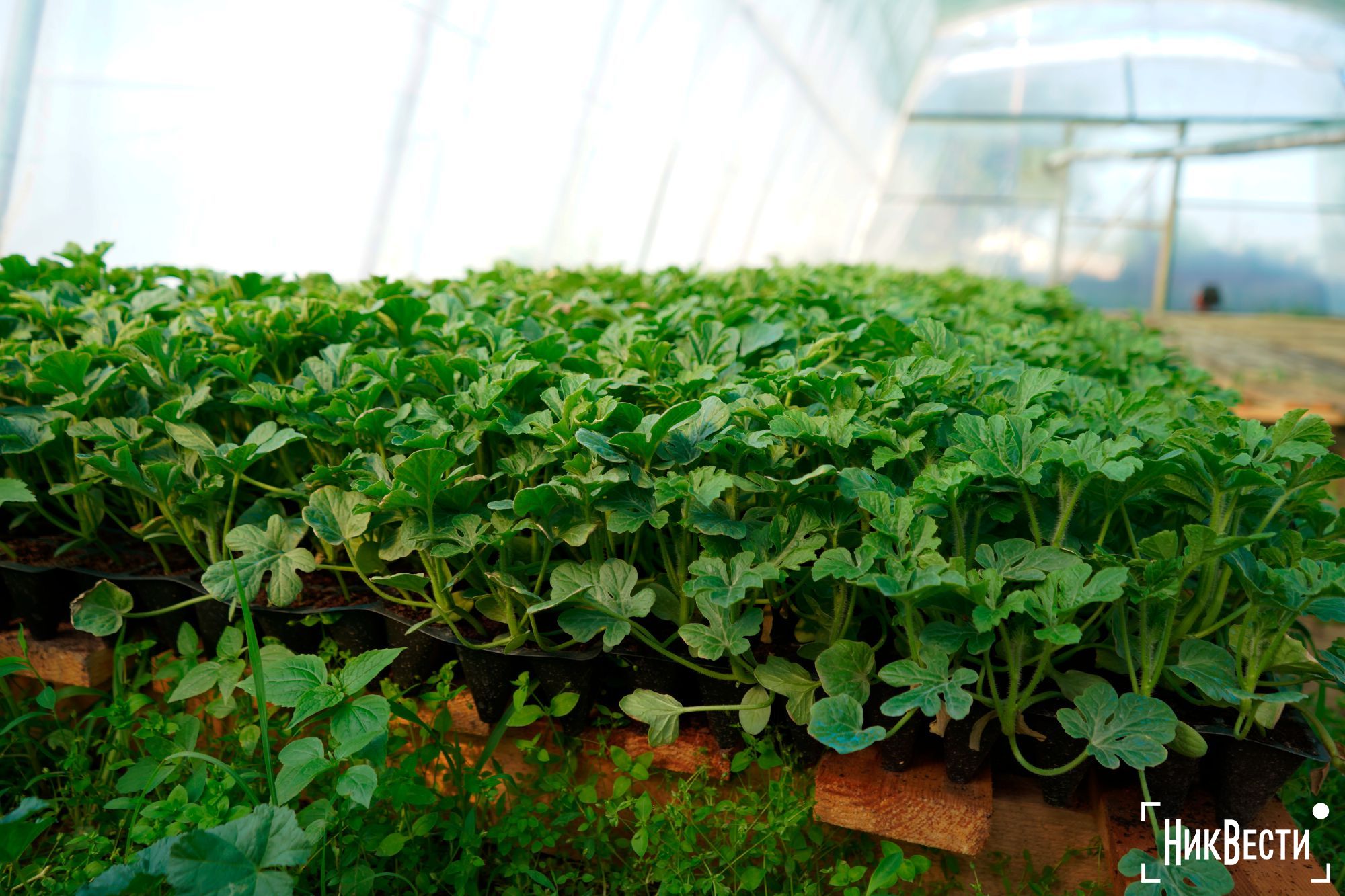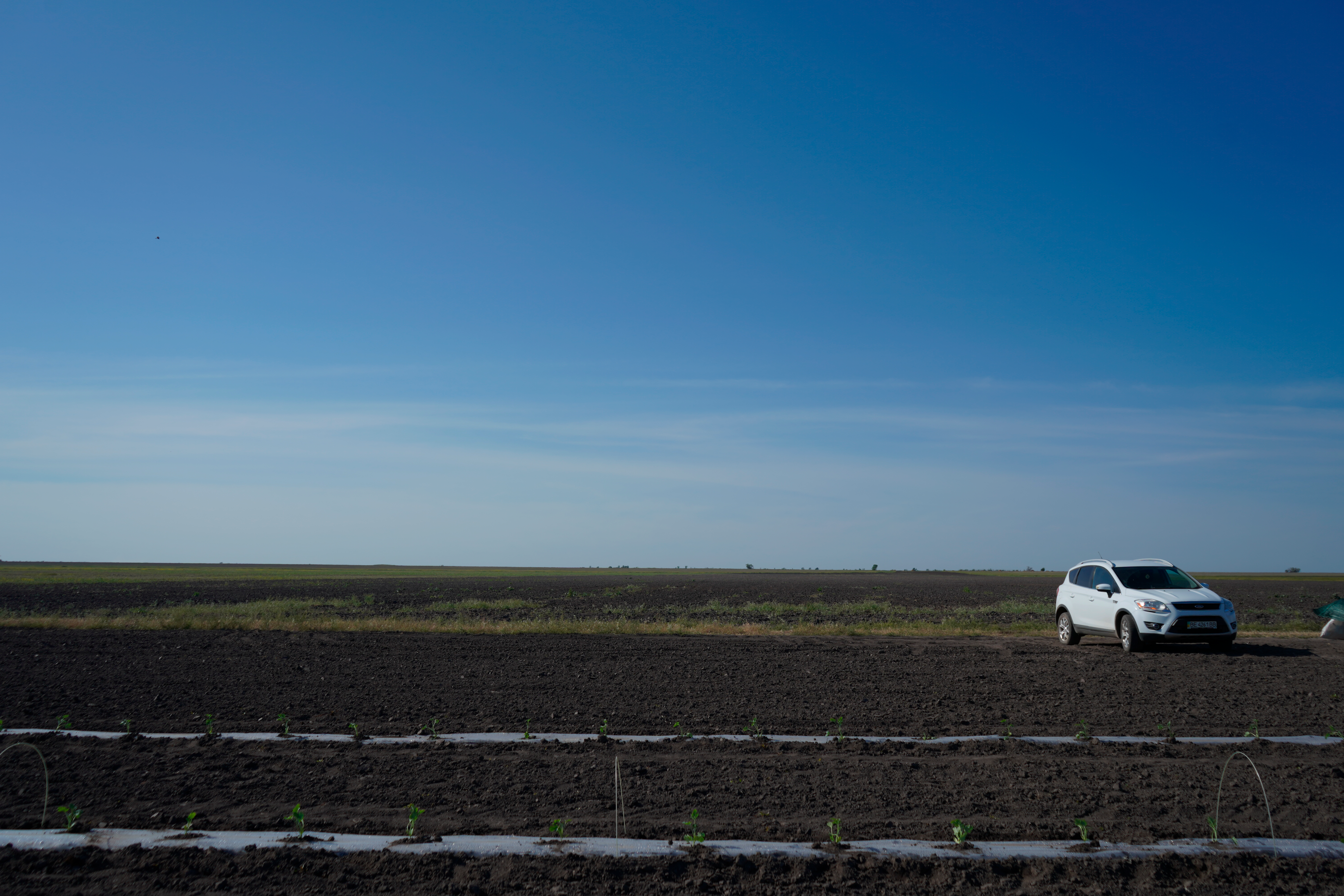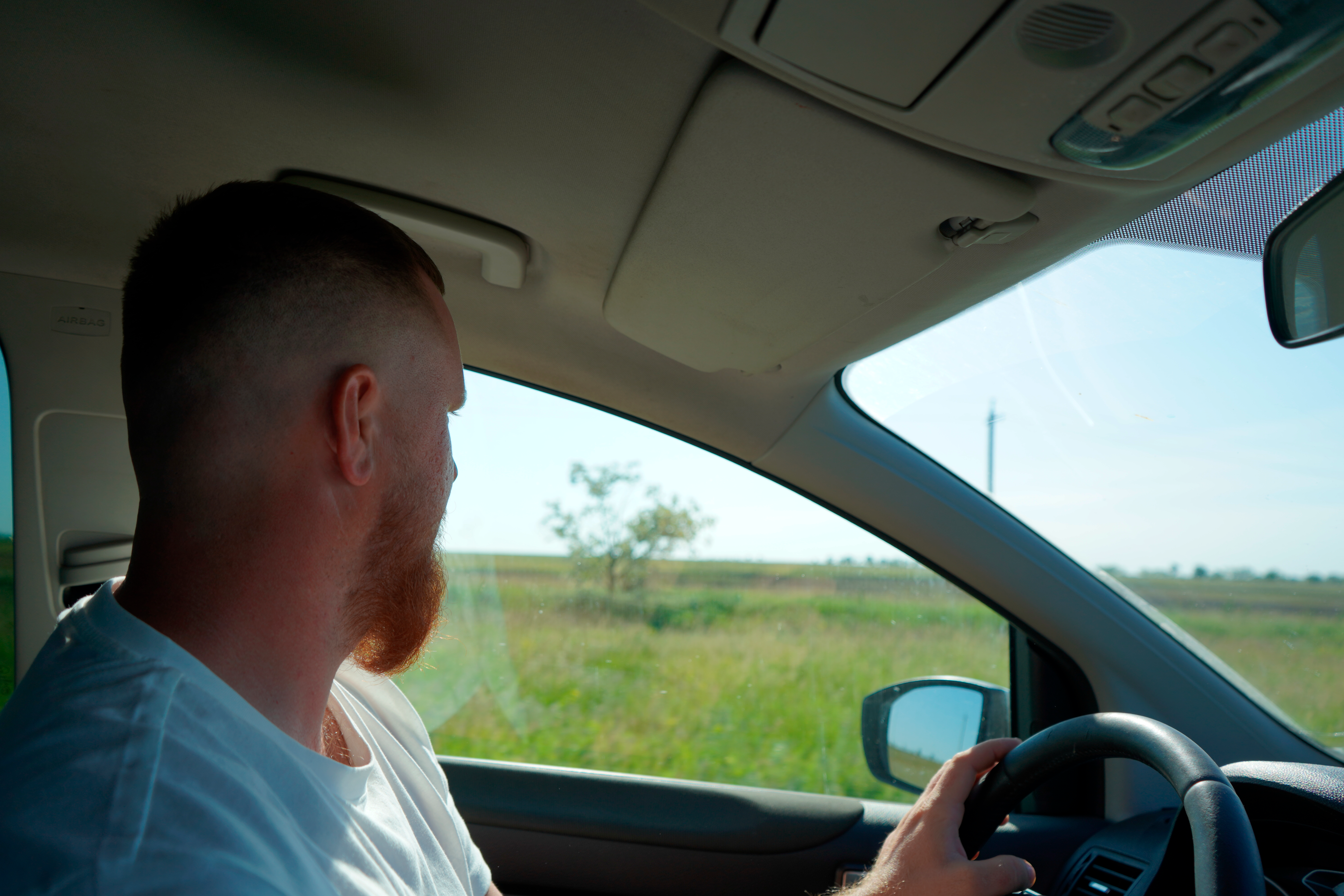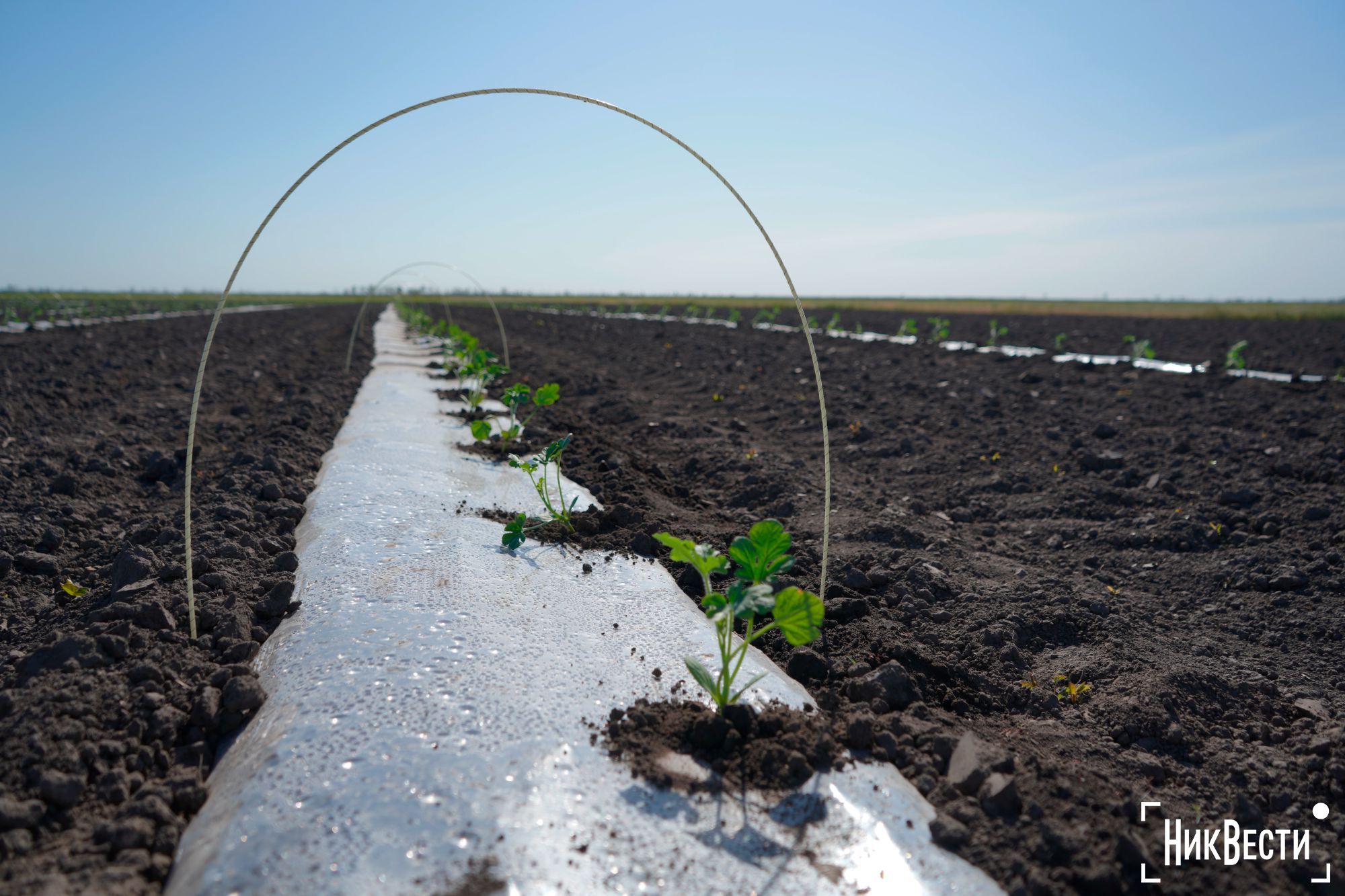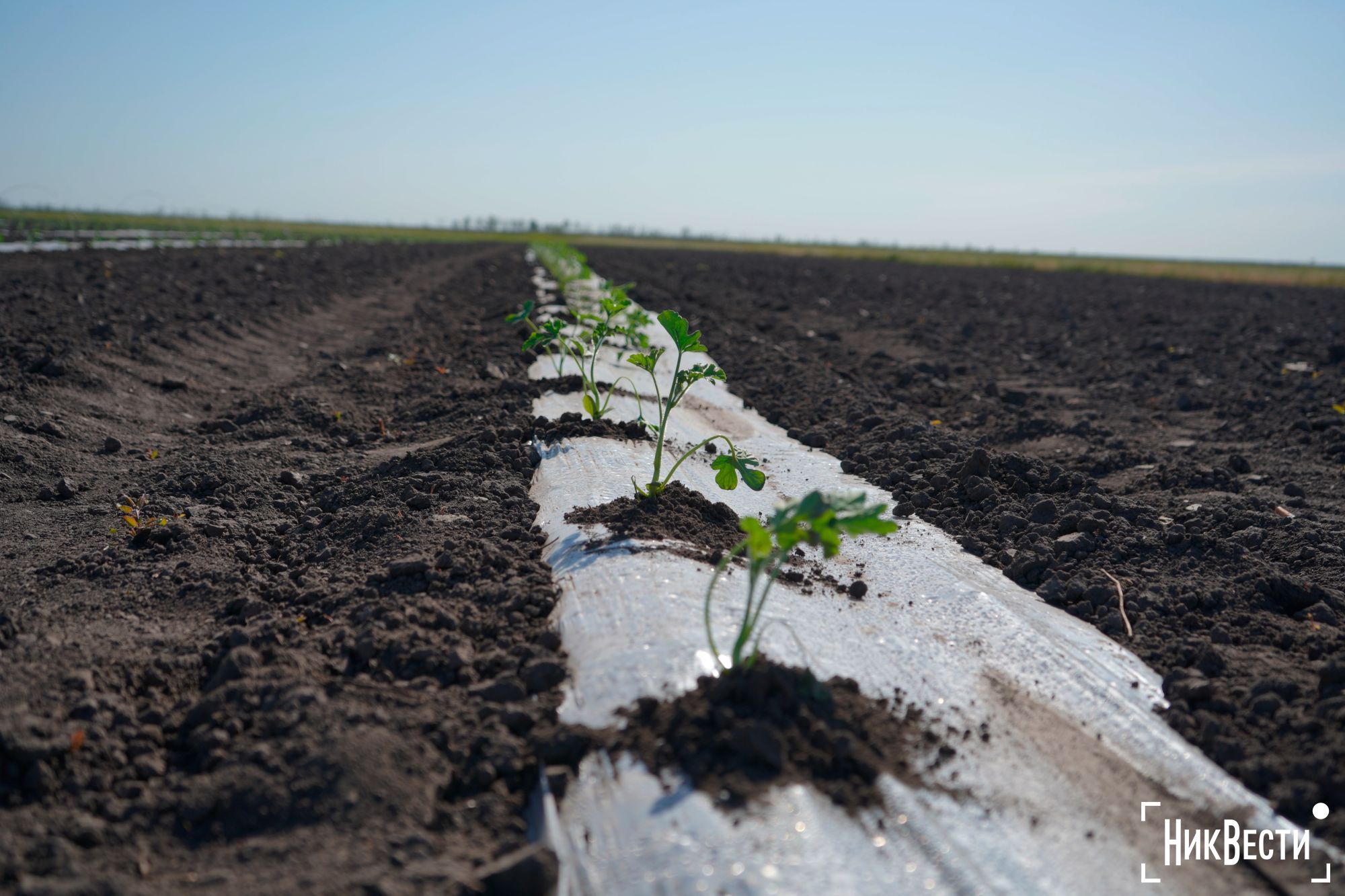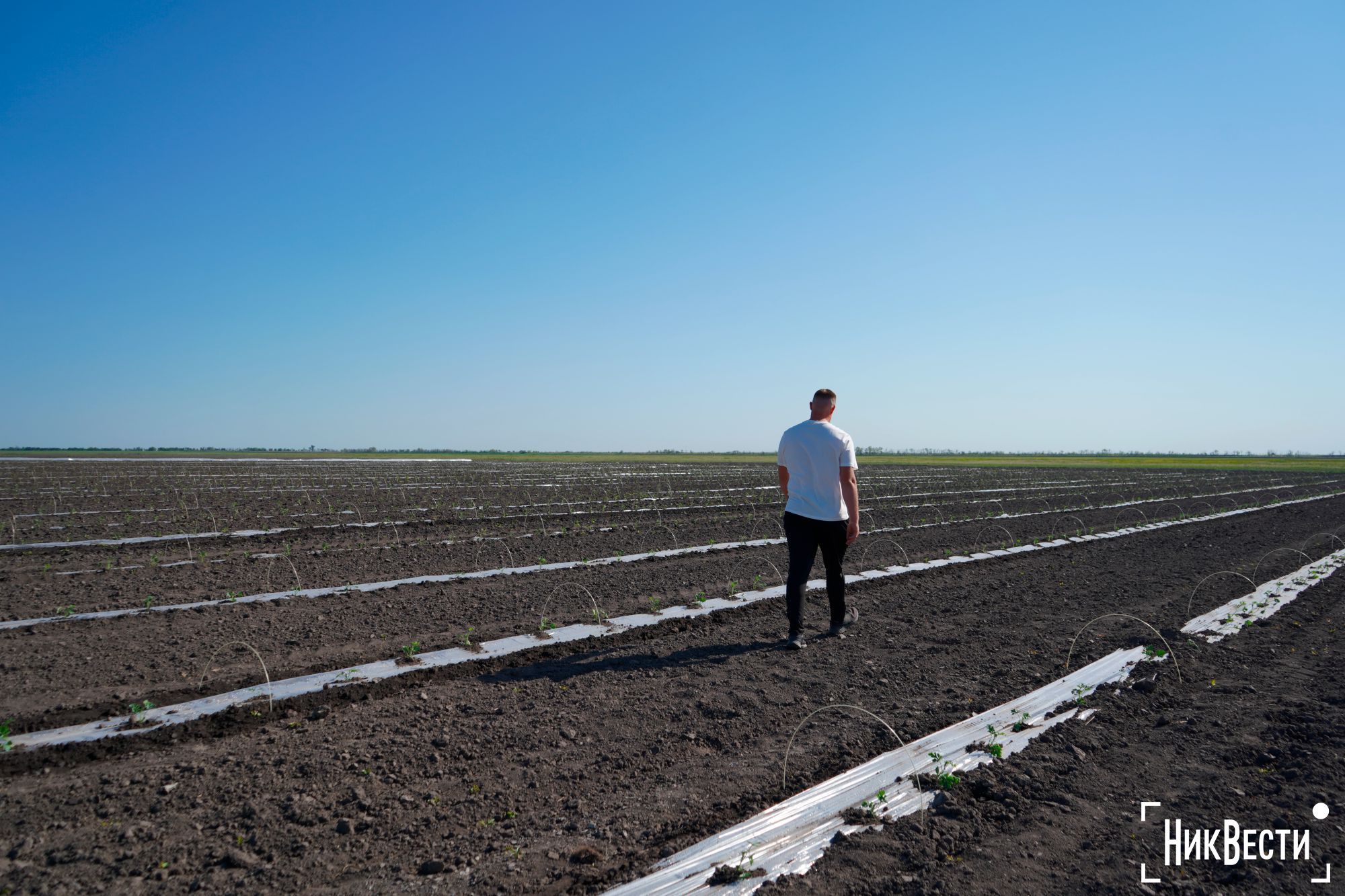«Either we work, however risky, or end this story»: why the farmers of the Mykolaiv region continue to work, despite the mine danger
- Anna Hakman
-
•
-
13:49, 31 May, 2024
About 2,000 people live in the small village of Lymany in Mykolaiv Oblast. They are mainly engaged in farming. At the beginning of the full-scale war, the village was constantly under fire, but after the liberation of Kherson, the situation improved significantly. However, the Russians still shell Limany and the community from time to time, so unexploded shells remain in the fields. Being a farmer in Limany is now dangerous.
And it's difficult. Logistics chains and processes established over the years broke down, the Russians mined many cultivated areas, destroyed equipment and warehouses. But despite this, farmers still continue to work.
«NykVesty» visited the village to talk with local farmer Kostyantyn Kolisnichenko and find out how his farm works despite the threat and difficulties.
Life in Lymany: getting to know Konstantin
The houses in Limany seem ordinary and well-kept. Almost every yard has flower beds. But if you look closely, you can see individual broken buildings. The village is still shelled from time to time, so the locals are in no hurry to open the windows that have already been broken by the shock wave - they remain covered with oilcloth.
Konstantin meets us with his dog at the gate and takes us to the yard. In the middle of the yard is a house, next to it is a cozy gazebo.
A fence separates the living area from the «farm yard» further behind the house. There is a household: several sheds for animals, storerooms for storing inventory, as well as a small garden with green beds.
Kosti is 27 years old. He started farming since he was a student, and he was interested in farming since childhood, although his father tried to dissuade him from taking over the family business:
«My father did not want me to become a farmer, because it is difficult - one year there can be a harvest, and then two or three years there is nothing at all. We had such years that my father did not collect anything».
By his first education, he is an engineer of welding processes, he studied at the Admiral Makarov National Technical University. But then he still went to Mykolaiv Agrarian University. Finally, Kostya decided to continue his father's work when he fell ill with cancer:
«Father fell ill at the beginning of the season. Someone needed to work, so I started»
Now their farm is about 170 hectares of land, but Kostya does not consider himself a big farmer. He says the land is infertile — loamy.
He mostly works alone, and is happily helped by his retired uncle Vova. Sometimes invites people to help. For example, 12 workers were hired to plant seedlings.
This year, Kostya decided to experiment - in addition to grain and oil crops, he also planted watermelons.
«You need to try something new and improve, just sitting still won't work», – he explains.
Greenhouse, watermelon and alternatives
Before the start of the full-scale war, the Kosti farm specialized in the cultivation of grain and oil crops - wheat, barley and sunflower. After all, that was all they did.
And now next to his house is a greenhouse with transparent walls. Inside, small pots stand in neat rows - these are already sprouted melon seedlings.
Kostya built this greenhouse in February 2024. Previously worked only in the open field. In 2022, we had to take a break - the planted winter crops were never harvested.
Despite the danger, Kostya returned to farming at the end of 2023. After all, you have to pay taxes, pay rent for land to 16 shareholders. Kostya says:
«It was possible to put everything on hold, to wait until it was safe. But either we work, however risky, or we end this story. The third is not given».
And adds:
«We are looking for alternatives. We are reformatting, because it will no longer work to fill with grain as before. I've worked for so many years, so I can't quit it, it's my father's work».
Farmers, fields and mines
Farmers, despite the mine danger, go out into the fields. When explosive objects are found - mines or unexploded shells - they put tags, then pass the information to the deminers. It also happens that farmers do not want to wait for demining to reach them, and work in the fields at their own peril and risk, because for them this land is the only source of income. Kosti's family also decided to independently examine the field in order to speed up demining.
Konstantin and his father independently went out into the fields and marked the places where they saw suspicious objects. They inspected the territory, wrote down the coordinates and passed them on to the State Emergency Service. Sappers came and demined the fields.
«Already then, we carried out state demining, the engineering troops finished it at the beginning of September 2023. But even after that, there were cases when people blew themselves up on the field», – says Kostya.
We went to his fields near the house. The Land of Bones is a 10-minute drive away. And between the fields themselves - the same amount.
Some have already planted seedlings, some have cultivated wheat, some fields are still being prepared for sowing, and some have not yet had time to prepare. We arrived at a field where watermelons were planted - it took several days, and still there were still some seedlings left. Kostya shows the fields, green spots of young plants, and is glowing with love. It tells about methods of care and hope for the future harvest. Despite the risks due to projectiles, he continues to work: he says there is no time to put farming on pause.
Farming is a family business for Kosty.
«Every year it's like you're raising your own child. It's hard to explain. I go to the field in the morning: dew, harvest, I feel the smell of wet mown hay – this is my own romance».
How is the demining of the Mykolaiv Oblast going on?
Ukraine recently updated the country's priority demining plan. According to it, more than 512,000 hectares of agricultural land are subject to priority demining, of which 44,000 hectares are in the Mykolaiv region.
As of December 2023, 30% of the territory of the Mykolaiv region has been mined. In total, it is 754 thousand hectares of land.
At the same time, they are working on demining in the region. For example, as of October 2023 , 13 thousand 40 hectares, including 9 thousand 25 hectares of agricultural land, have been demined in the Mykolayiv region.
Dmytro Komarov, the author of the «World Inside Out.Ukraine» project, visited the mined territories of the Mykolaiv region and showed the work of local sappers. «NykVesty» also who is trying to demine his fields on his own.
About 30,000-35,000 hectares of land remain mined in the Bashtan district of the Mykolaiv region, part of which was under occupation. And in the village of Maksimivka of the Pervomaiska community of the Mykolaiv region, locals live with an unexploded shell under the foundation of the house.
In general, the demining situation in Maksimivka is currently critical. A year after liberation from the Russian occupiers , the village was demined by only 40%.
Read also the article «NikVesty» «Decades are needed: How the demining process of the Mykolaiv region continues».
It is known that the company «Demining of Ukraine» has developed a device capable of demining the Mykolaiv region for three months.
Also, units of the Corps of deminers are already working in the Mykolaiv, Kherson and Kharkiv regions.
Also read the article «NikVesty» «How mechanized demining machines clear fields of mines in the de-occupied Mykolaiv Oblast».
